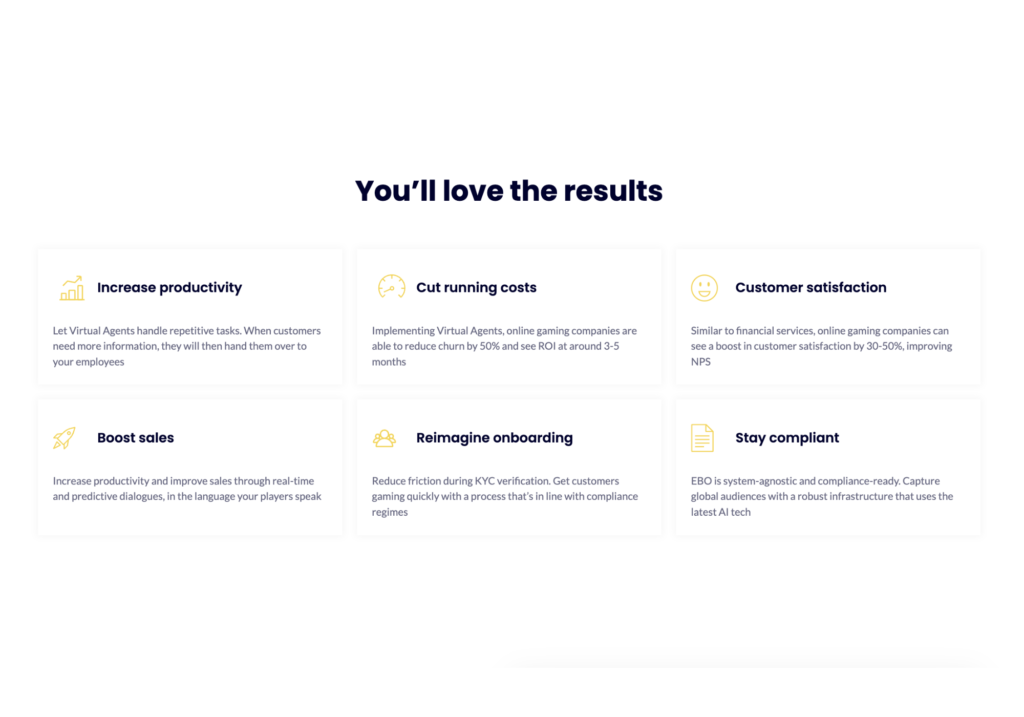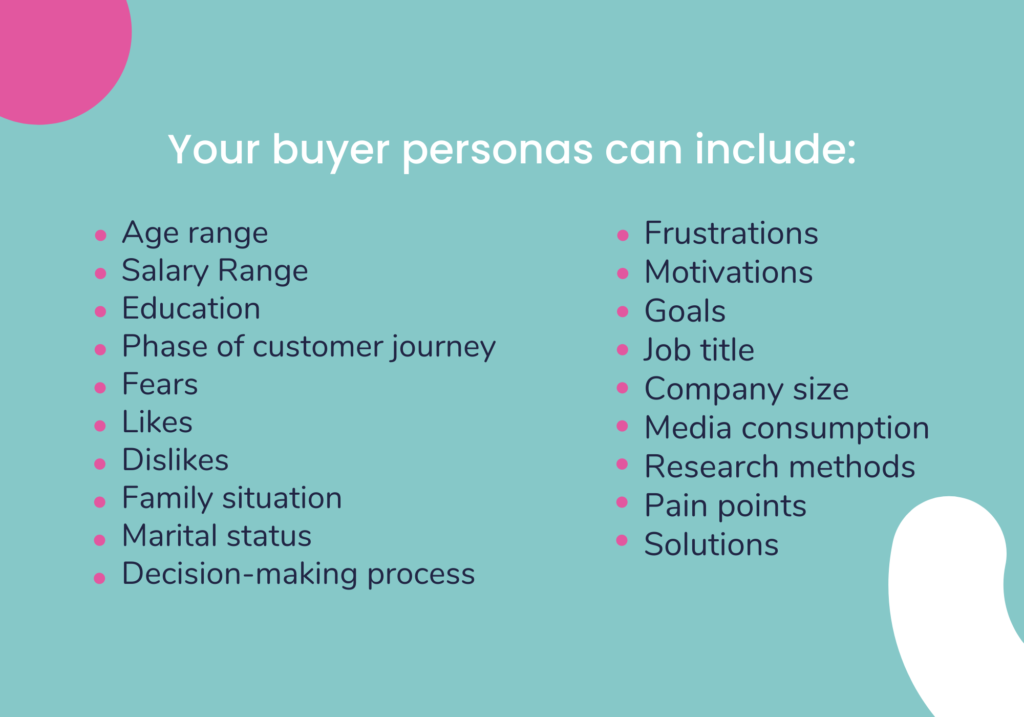The copywriting secrets are out! Good copy requires some basics that you cannot ignore. As a writer, I often have these “Oh my gosh, I love this,” moments when I go to a company’s website and see some clever wordplay or some headline that really catches my eye. While, of course, I’ve also had the opposite reaction to some copy…cringe-worthy words that have just been thrown on a page, as if there is no sense or purpose.
From our experience of writing for companies in the tech industry, as well as some other industries, we’ve compiled a list of 6 secrets to make sure your copy does what it’s supposed to do – informs, provides value and attracts potential clients.
Share up-to-date buyer personas
You should always take an iterative approach to your buyer personas. They will likely have changed, in some way, since the first day they were developed. This is why it’s not only important to share your buyer personas with your copywriter but to ensure that your personas are up-to-date.
Over time, with more data collected, and deeper insights into your business and your customers, you learn more about who your target audience is, should be, and who you’d like to reach out to. The ideas you might have had in the first moment you created the personas should develop into something richer and more valuable.
Sharing these personas, which have been updated, with your copywriter ensures that they understand who your target audience is, and who they are trying to attract.
Utilize your TOV documentation
I guess the first question here is…Do you have a Tone of Voice document? If you don’t, get one! This should outline everything from the words you like and dislike, to how serious or funny you want your communications to be.
Copywriters need to know in what tone they should write. Understanding your buyer personas is one part, but the TOV documentation will inform your copywriter exactly how they should write. Do you use “Hey” or “Hello Mr./Ms.” to start off emails? Do you want to avoid a word like “lucrative”, because it sounds too harsh, and prefer using terms like “profitable” or “advantageous” instead?
Your TOV documentation helps to ensure that no matter who is writing copy for your company, brand, product or service, they are always consistent across the board. In some companies, there are multiple people and teams reaching out to clients or customers – having that consistency in communications helps to build trust in your brand.
Simply put, the TOV documentation is great for all teams, from customer support to sales. And it is essential when you want your copy to be really impactful.
Provide a detailed brief
This should include everything from how many words you expect a document to be, to which English spelling you prefer. All details required to successfully write for the asset you want to create.
The more detailed the brief, the better the results you’ll get. If you have ever given someone a brief and got back a piece of writing that surprised you…chances are your brief wasn’t clear enough. You want to make sure you include everything you feel needs to be included in the asset – whether is a landing page, infographic or feature sheet.
Reduce the risk of surprises, or wasted efforts and money. Plus copywriters will really love you for this! There are few feelings for a copywriter, as satisfying as receiving a clear and concise writing brief that leaves no question as to what is expected from you.
Create a copywriter’s deck
Most companies create decks for business development or for investors, but not for much else. We’d argue that there is a lot of value in having these for contractors too. Especially for copywriters. It’s a place where you can include details like your buyer personas, and your TOV documentation, but also anything else important about your company or services that you want to be highlighted.
Your business value proposition is always good to share in this deck, as it’s an easy way for copywriters to immediately understand your USPs (Unique Selling Points) and what pains your product or service alleviates.
In some cases, companies like to throw loads of long PDF documents at new copywriters, saying “read this, and you’ll get a good idea of who we are and what we do.” Realistically, why waste so much time and effort?
If you take the time to compile all the important parts into a deck, you’re not only saving your copywriter hours of trying to read between the millions of lines, but you’re also ensuring that they are catching on to what you believe are the most crucial bits.
Give constructive and timely feedback
We cannot express this enough! If a copywriter hands in an asset they’ve written, give them constructive feedback. Telling someone “This isn’t good,” “This is garbage,” “I love this,” and “Change this to something else,” is not helpful to anyone.
We need to ensure we are being clear and concise about our expectations. It might feel like you don’t have the time to provide such detailed feedback, but we can promise you that it’s completely worth it.
Most copywriters love what they do and love learning from each task they complete. By taking the time to give detailed feedback the first time, you can be certain that you won’t see the same mistakes again, or you’ll see much fewer of them.
This means that, just like training a new employee, you’re helping to train your copywriter in the way you want to see things written about your company, product, or service. Each task they do for you will only get better and better because they know what you like and don’t like, and also understand WHY you like or dislike certain things.
We also mention “timely” in this section, because most often, a copywriter will provide you with a “re-write” or “edits” – where once you’ve provided feedback, they can jump in and make all the changes. We suggest ensuring that this feedback is given within the week, and no more than within the month. Past that, your copywriter may not have the time anymore, having moved on to other projects – and really, it’s just about courtesy. If you value the time of your copywriter, providing timely feedback ensures they’ll get your document edited, proofed, and publish-ready as soon as possible.
Hire an experienced copywriter
More and more, we’re seeing job postings for junior copywriters. And we aren’t saying that no one should hire a junior – of course, all great copywriters had to start somewhere. However, we get the sense that some companies don’t understand how important it is to work with someone who is experienced.
If your budget is tight, consider what your priorities are – which assets are more important than others. It’s not just about throwing loads of content out at the internet and seeing what sticks. Copywriters with experience, especially in your particular industry, will already have some clues as to what will make the most impact and how to write in such a way that your target audience feels it resonates with them.
We’re all for giving new copywriters an opportunity to hone their skills, but when time and money are at stake, you get more bang for your buck by hiring someone who has a proven track record for their copywriting expertise, than trying to save a few pennies by hiring someone less experienced.
These secrets are now…not so secret
All in all, there are some key ways you can ensure that the copy you’re having written really makes an impact. It may seem daunting at the start – that you’ll have to put in all this extra time and effort to create detailed briefs or a copywriter’s deck. The truth is, putting that bit of time and effort in now will save you loads of it later on.
With clarity of your product and services, comes a more informed approach to writing your texts. It means fewer iterations for edits and re-writes, a better understanding of what words you like and dislike, and overall a more targeted path to attract your buyer personas.















